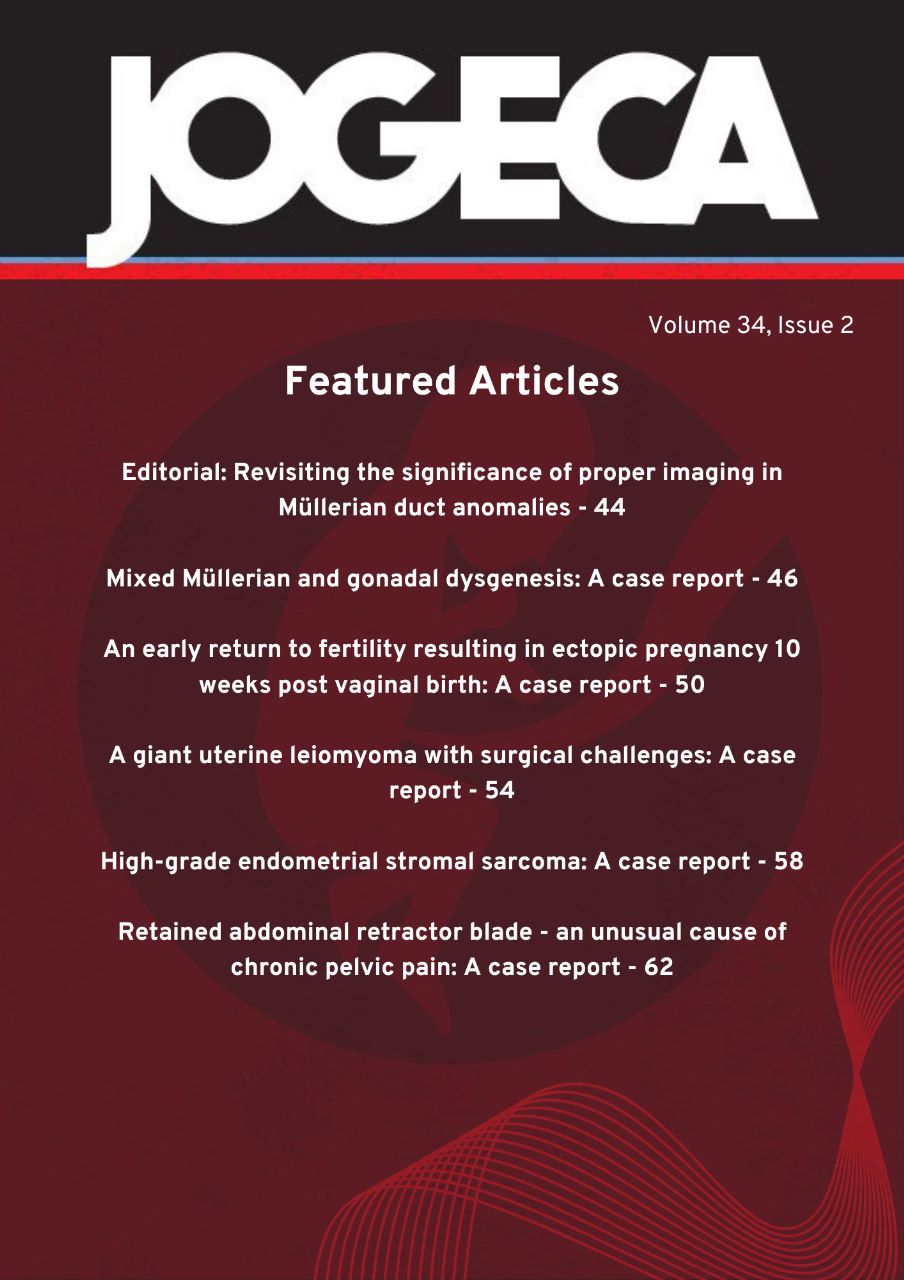Empty follicle syndrome – an assisted reproductive technology disaster: A case report
DOI:
https://doi.org/10.59692/jogeca.v36i1.304Abstract
Background: The primary objective of individualized controlled ovarian hyperstimulation (iCOS) is to obtain sufficient numbers of good-quality oocytes. This is pursued to increase the chances of obtaining good-quality embryos following fertilization to restore fertility potential.
Case presentation: A 34-year-old nulliparous presented with a 3-year history of primary infertility. A thorough investigation of the couple failed to definitively diagnose the cause of infertility. Following a satisfactory response to controlled ovarian hyperstimulation, meticulous follicular aspiration yielded no oocytes. Given the high cost of treatment and the inherent risk of recurrence of the problem for repeat stimulation, the couple opted for oocyte donation. This decision was implemented, and the treatment process was continued.
Discussion: Empty follicle syndrome (EFS) is a rare but frustrating complication of in vitro fertilization. Without viable alternatives, this usually leads to cycle cancelation. Repeat stimulation often yields similar results although in some cases dual triggering may confer benefits.
Conclusion: Although rare, there is value in considering the possibility of EFS in women undergoing iCOS and counseling the patients accordingly.
Downloads
Published
How to Cite
Issue
Section
Categories
License
Copyright (c) 2024 The Authors.

This work is licensed under a Creative Commons Attribution 4.0 International License.




